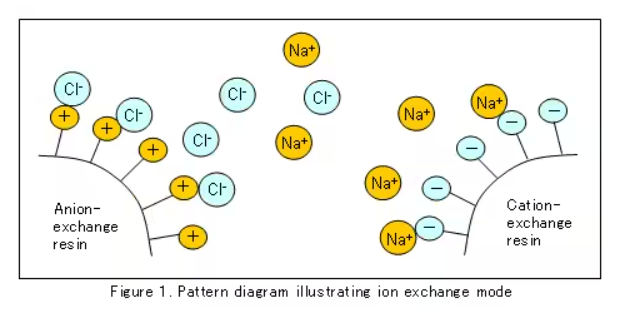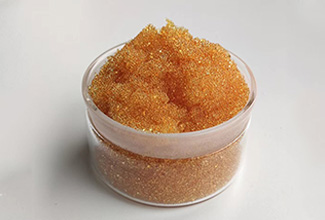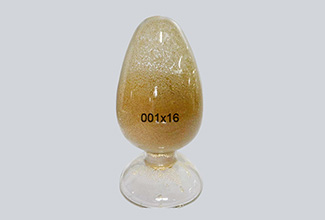What are the Types of Ion Exchange Resins?
What is ion exchange resin?
Ion exchange resin is a high molecular polymer with functional groups that is insoluble in water, acid, alkali and other organic solvents. It has selective exchange and adsorption capabilities for various ionic substances and some organic substances.

Ion exchange resins can be divided into styrene series, acrylic acid series, epoxy series, phenolic series, etc. according to the monomers of their polymers; they can be divided into strong acid cation exchange resins, weak acid cation exchange resins, strong base anion exchange resins, weak base anion exchange resins, chelating resins, mixed bed resins and special ion exchange resins according to the properties of the groups; they can be divided into gel type and macroporous type according to their structures.
Ion exchange resin is a high molecular polymer with functional groups that is insoluble in water, acid, alkali and other organic solvents. It has selective exchange and adsorption capabilities for various ionic substances and some organic substances.

Ion exchange resins can be divided into styrene series, acrylic acid series, epoxy series, phenolic series, etc. according to the monomers of their polymers; they can be divided into strong acid cation exchange resins, weak acid cation exchange resins, strong base anion exchange resins, weak base anion exchange resins, chelating resins, mixed bed resins and special ion exchange resins according to the properties of the groups; they can be divided into gel type and macroporous type according to their structures.
Last One :
Next Article :
Related Products
-
.jpg) Super Absorbent Polymer SAP for AgriculturalMain ngredient:Potassium PolyacrylatePhysical Property:Non-toxic,NonpollutingFunction:Drought control /Saving water /Soil conditioner
Super Absorbent Polymer SAP for AgriculturalMain ngredient:Potassium PolyacrylatePhysical Property:Non-toxic,NonpollutingFunction:Drought control /Saving water /Soil conditioner -
 C010FG Food Grade Drug Purification Exchange ResinAppearance: Claybank to tan transparent spherical particle.The degree of crosslinking : 10%.Ionic form:Na+
C010FG Food Grade Drug Purification Exchange ResinAppearance: Claybank to tan transparent spherical particle.The degree of crosslinking : 10%.Ionic form:Na+ -
 001x16 Strong Acid Cation Exchange ResinAppearance: Claybank to tan transparent spherical particle.The degree of crosslinking : 16%.Ionic form:Na+
001x16 Strong Acid Cation Exchange ResinAppearance: Claybank to tan transparent spherical particle.The degree of crosslinking : 16%.Ionic form:Na+
Message

